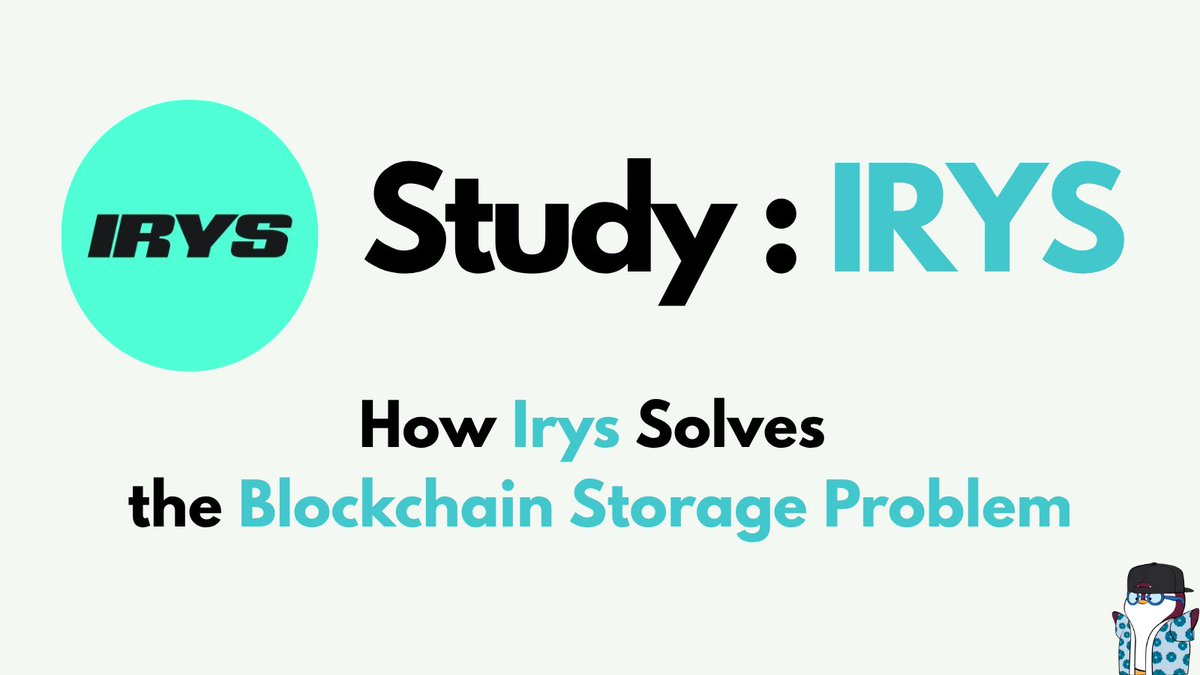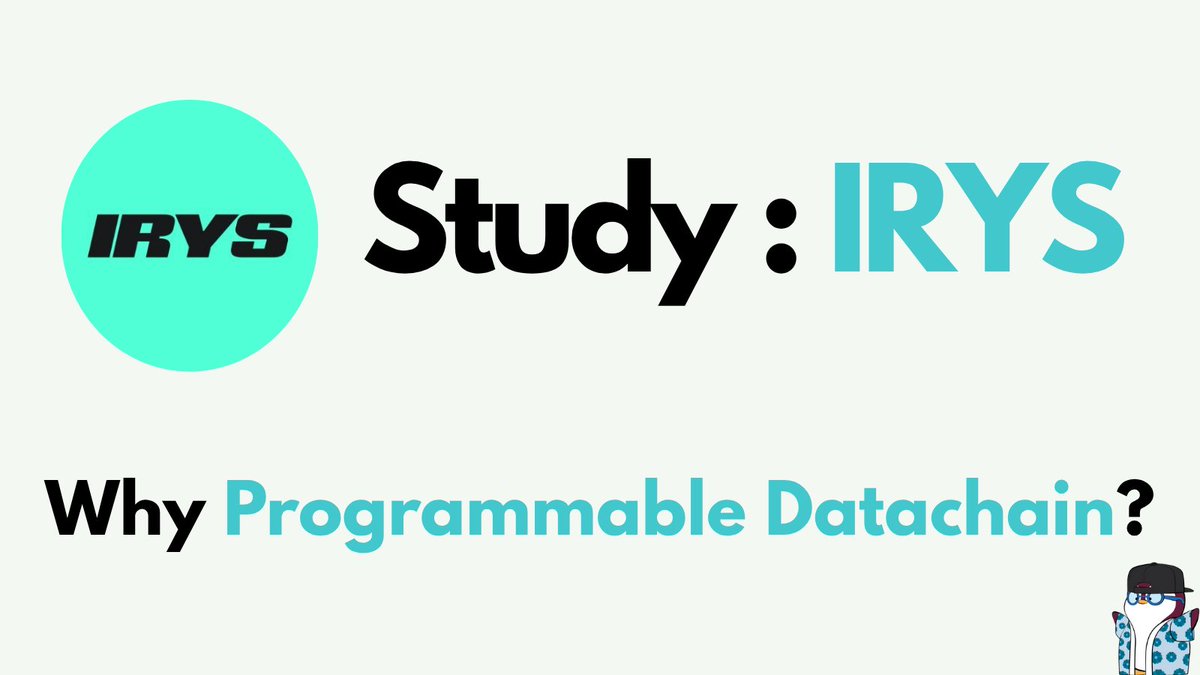How Irys Solves the Blockchain Storage Problem
Blockchain has enabled decentralization and trust through its distributed nature, but it faces significant limitations when it comes to data storage.
In particular, smart contract based chains like Ethereum and Solana prioritize reducing the cost of contract execution, but the cost of data storage remains extremely high compared to transaction execution costs.
For example, storing a 1MB file directly on Ethereum would cost approximately $3,800 in gas fees at the current average gas price of 1.5 gwei.
This makes it extremely difficult to use blockchain technology for data storage on a large scale and hinders its broader adoption.
To solve this problem, data chains such as Arweave and Filecoin have emerged, aiming to provide cheaper and more efficient onchain storage.
However, these data chains face significant issues with cost predictability, storage costs fluctuate heavily depending on market conditions, creating uncertainty for long term use and budgeting.
This is why @irys_xyz is created.
IRYS has re-engineered the storage process and cost structure in an innovative way, differentiating itself from traditional data chains.
First, IRYS handles data using a dual ledger system : the Submit Ledger and the Publish Ledger.
Data is first temporarily validated and then promoted to permanent storage, enhancing both the reliability and efficiency of the storage process.
However, the most important feature of IRYS is its cost stabilization mechanism.
IRYS predicts and records the IRYS/USDT price at every block.
This price data isn’t just a snapshot, it’s averaged over time to smooth out volatility, allowing developers and enterprises to predict long term storage costs and manage budgets with greater confidence.
Additionally, if an IRYS node submits a price that deviates too far from the market reality, the block can be rejected by other nodes.
This built in incentive mechanism ensures the accuracy and integrity of the network's pricing.
IRYS is not just a cheap storage network.
IRYS is a network focused on building predictable, reliable, and stable infrastructure for data storage.

Why Irys Programmable Datachain?
Bitcoin revolutionized payments. Ethereum unlocked smart contracts, transforming industries like finance, gaming, and communications. But throughout this evolution, one critical limitation became increasingly evident, data storage.
Traditional blockchains were optimized for executing smart contracts, not for storing data.
As a result, storing even a single image on Ethereum can cost hundreds of dollars.
The inefficiency of onchain storage made it clear that a new solution was needed, one that could store data securely and affordably onchain.
This led to the rise of datachains.
Datachains are blockchains specifically designed to store data efficiently onchain.
Projects like Arweave and Filecoin pioneered this space, successfully reducing the cost of onchain storage.
However, they came with a major limitation, the data they stored remained static.
It existed, but it couldn’t interact or perform any active function.
Today, we stand at the threshold of the next evolution.
Data must go beyond mere storage.
Data must become dynamic and capable of action.
This is where @irys_xyz comes into play.
Irys aspires to be the world’s first programmable datachain.
Irys doesn’t just store data; it imbues it with properties and rules, enabling direct interaction with a variety of applications.
On Irys, data can carry ownership rights, access permissions, royalty structures, and more, transforming it into a programmable entity intimately linked with smart contracts.
It's like turning a static document into a living, functional program.
Moreover, Irys integrates storage and execution within a single network, addressing both the cost and scalability challenges faced by traditional blockchains.
Through its proprietary IrysVM, data and smart contracts interact directly within the same protocol, eliminating unnecessary intermediaries.
This allows developers to build onchain applications more efficiently and at lower costs.
Verification and trust are also at the core of Irys design.
A multi ledger architecture ensures that data is validated at upload and then promoted to permanent storage.
Irys employs a technique called Matrix Packaging, incentivizing miners to store unique, verifiable copies of data, thereby reinforcing the network’s overall reliability.
Centralization, a persistent issue in many blockchain systems, is addressed through Irys hybrid consensus mechanism, which combines Proof of Work (PoW) and Proof of Stake (PoS).
The protocol limits the hash power that any single mining address can control, ensuring a truly decentralized and open network without risking dominance by any single entity.
In this way, Irys is not merely a data storage solution; it is a living, dynamic onchain infrastructure.
Irys represents a decisive step away from static storage and toward a future where data and applications are deeply interconnected.
PS : @xaitoshi_ Let me join @irys_xyz community😃

52.75K
23
The content on this page is provided by third parties. Unless otherwise stated, OKX TR is not the author of the cited article(s) and does not claim any copyright in the materials. The content is provided for informational purposes only and does not represent the views of OKX TR. It is not intended to be an endorsement of any kind and should not be considered investment advice or a solicitation to buy or sell digital assets. To the extent generative AI is utilized to provide summaries or other information, such AI generated content may be inaccurate or inconsistent. Please read the linked article for more details and information. OKX TR is not responsible for content hosted on third party sites. Digital asset holdings, including stablecoins and NFTs, involve a high degree of risk and can fluctuate greatly. You should carefully consider whether trading or holding digital assets is suitable for you in light of your financial condition.

